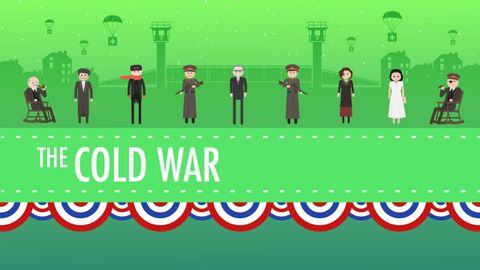
Subtitles & vocabulary
The Cold War: Crash Course US History #37
00
黃駿祐 posted on 2013/12/10Save
Video vocabulary
cold
US /kold/
・
UK /kəʊld/
- Noun
- Illness of sneezing, coughing, and a sore throat
- Adjective
- Having a very low temperature
- Being unfriendly or lacking emotion
A1
More world
US /wɜrld /
・
UK /wɜ:ld/
- Noun (Countable/Uncountable)
- All the humans, events, activities on the earth
- Political division due to some kind of similarity
A1
More wait
US /wet/
・
UK /weɪt/
- Verb (Transitive/Intransitive)
- To delay or not do something until later
- To spend time until an expected thing happens
A1TOEIC
More work
US /wɚk/
・
UK /wɜ:k/
- Noun (Countable/Uncountable)
- The product of some artistic or literary endeavor
- Everything created by an author, artist, musician
- Verb (Transitive/Intransitive)
- To bring into a specific state of success
- To be functioning properly, e.g. a car
A1TOEIC
More Use Energy
Unlock All Vocabulary
Unlock pronunciation, explanations, and filters
